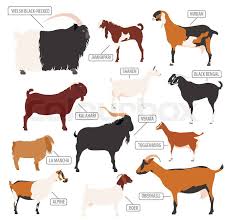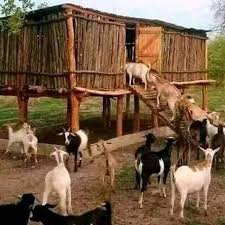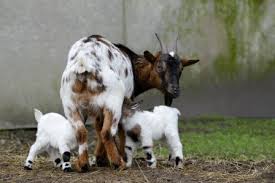The domestic goat is a subspecies of the wild goat found in Southwest Asia and Eastern Europe. It belongs to the bovine family and is closely related to the sheep, both being part of the “goat antelope” group. Domestic goats are among the oldest domesticated species.
For thousands of years, goats have been valued for their milk, meat, hair, and skins across the world. In recent years, they have also gained some popularity as pets.
Read Also: How to Control Cannibalism among Fishes
Management of Breeding Goat Stock

Steps for Managing Bucks (Male Goats)
1. Bucks intended for breeding should be kept in good condition.
2. Provide an adequate amount of food, as poorly fed goats tend to become sluggish and have reduced libido (keenness to mate).
3. Reduce diets high in phosphorus, as this can negatively affect fertility, particularly sperm quality.
4. Avoid deficiencies in Vitamin A and iodine, as these can lead to reduced libido.
5. Ensure that an exercise yard is available.
6. Regularly dehorn the bucks, and trim their hooves to prevent lameness.
7. Provide access to good pasture.
8. In the absence of pasture, provide up to 0.75 kg of concentrate per day per buck.
9. Two weeks before and during the breeding season, increase the concentrate to 0.45 to 0.9 kg.
10. For optimal breeding efficiency, use a mating ratio of 1 buck to 50 does (for hand mating) or 1 buck to 40 does (for pasture mating).
Management of Breeding Does (Female Goats)

The management of breeding does is related to their physiological phases, which include the dry period, pregnancy period, and lactation period.
A. Dry Period
1. This is the time when the doe is not producing milk.
2. Ensure the doe is placed on a high level of nutrition (a practice known as flushing), which is commonly done for dairy goats.
3. Provide an exercise yard.
4. Nanny kids (young females yet to reproduce) should not be overfed to prevent excessive fatness. The age of puberty is usually between 6-7 months.
B. Pregnancy Period
1. During the last 6-8 weeks of pregnancy, the doe should receive enhanced nutrition (known as steaming up).
2. Ensure constant access to water and mineral licks.
3. In the last week of pregnancy, provide about 0.3 to 0.5 kg of concentrate daily.
4. Signs of parturition (kidding) include uneasiness, restlessness, frequent sitting and standing, smelling the ground, and the appearance of a water bag.
5. Closely monitor the doe during kidding, which should typically be completed within 2-3 hours, though this may take longer if multiple kids are expected.
6. In cases of dystocia (difficulty in giving birth), or when the foetus size poses a problem, assistance may be required.
C. Lactation Period
1. Provide sufficient pasture and concentrate to the lactating doe to support milk production.
Read Also: Factors to Consider when Selecting your Fish Farming Site
Management of Kids (Newborn Goats)

1. Immediately after birth, clean the air passages if the kid is not breathing.
2. Stimulate respiration by using straw to tickle the nostrils or tongue.
3. If the kid still doesn’t breathe, hold it by its hind legs, turn it upside down for a short time, or pour cold water over it, or perform “mouth-to-mouth” respiration.
4. If these efforts are unsuccessful, the kid may either die or survive but remain weak.
5. Take care of the navel by dipping it in a 7% iodine solution to prevent infection.
Do you have any questions, suggestions, or contributions? If so, please feel free to use the comment box below to share your thoughts. We also encourage you to kindly share this information with others who might benefit from it. Since we can’t reach everyone at once, we truly appreciate your help in spreading the word. Thank you so much for your support and for sharing!
Read Also: What You Should Know About Strings of Pearls






